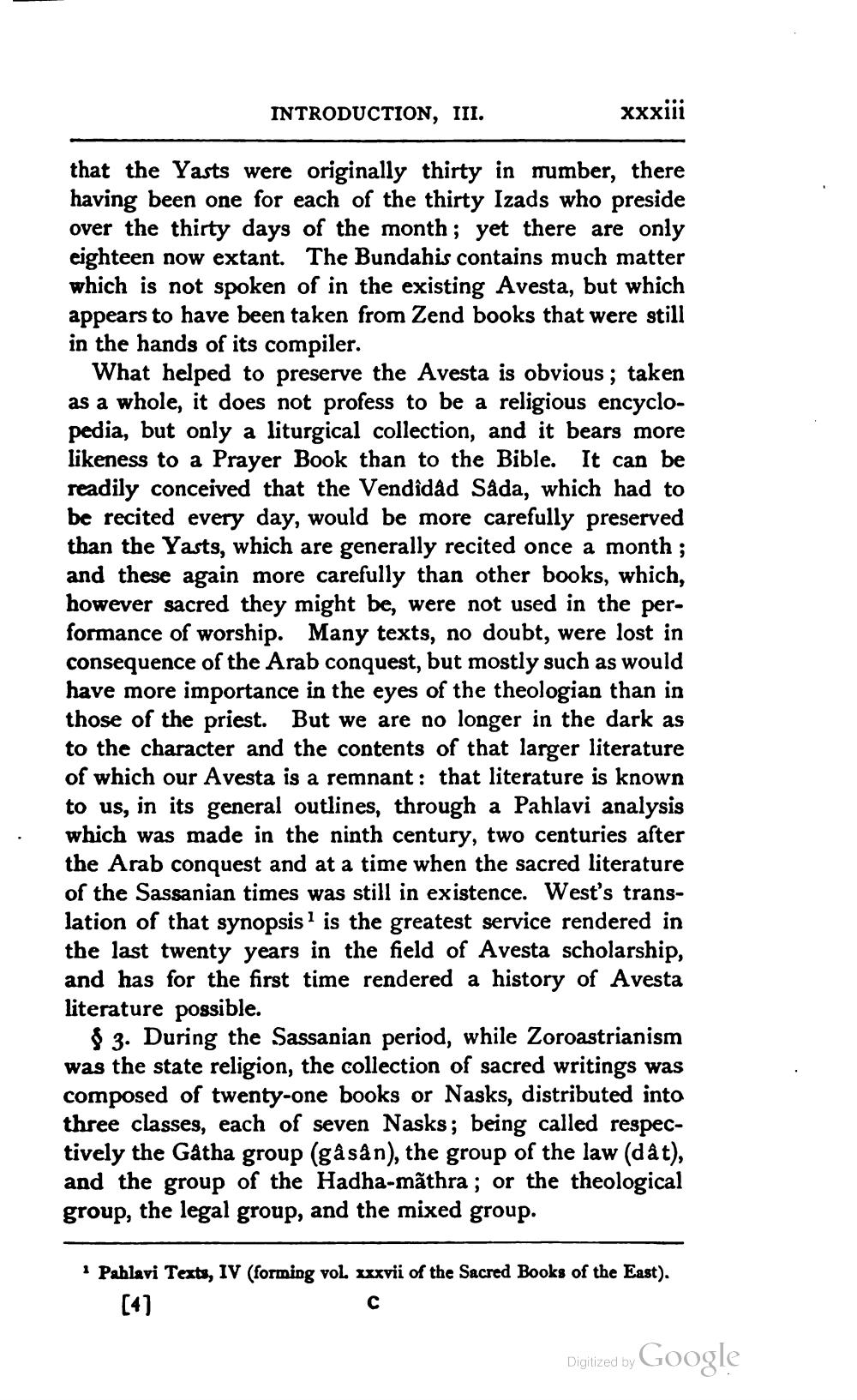________________
INTRODUCTION, III.
xxxiii
that the Yasts were originally thirty in number, there having been one for each of the thirty Izads who preside over the thirty days of the month; yet there are only eighteen now extant. The Bundahis contains much matter which is not spoken of in the existing Avesta, but which appears to have been taken from Zend books that were still in the hands of its compiler.
What helped to preserve the Avesta is obvious; taken as a whole, it does not profess to be a religious encyclopedia, but only a liturgical collection, and it bears more likeness to a Prayer Book than to the Bible. It can be readily conceived that the Vendidad Sada, which had to be recited every day, would be more carefully preserved than the Yasts, which are generally recited once a month ; and these again more carefully than other books, which, however sacred they might be, were not used in the performance of worship. Many texts, no doubt, were lost in consequence of the Arab conquest, but mostly such as would have more importance in the eyes of the theologian than in those of the priest. But we are no longer in the dark as to the character and the contents of that larger literature of which our Avesta is a remnant: that literature is known to us, in its general outlines, through a Pahlavi analysis which was made in the ninth century, two centuries after the Arab conquest and at a time when the sacred literature of the Sassanian times was still in existence. West's translation of that synopsis is the greatest service rendered in the last twenty years in the field of Avesta scholarship, and has for the first time rendered a history of Avesta literature possible.
$ 3. During the Sassanian period, while Zoroastrianism was the state religion, the collection of sacred writings was composed of twenty-one books or Nasks, distributed into three classes, each of seven Nasks; being called respectively the Gatha group (gå sån), the group of the law (dat), and the group of the Hadha-mãthra ; or the theological group, the legal group, and the mixed group.
· Pahlavi Texts, IV (forming vol. xxxvii of the Sacred Books of the East).
Digitized by Google




